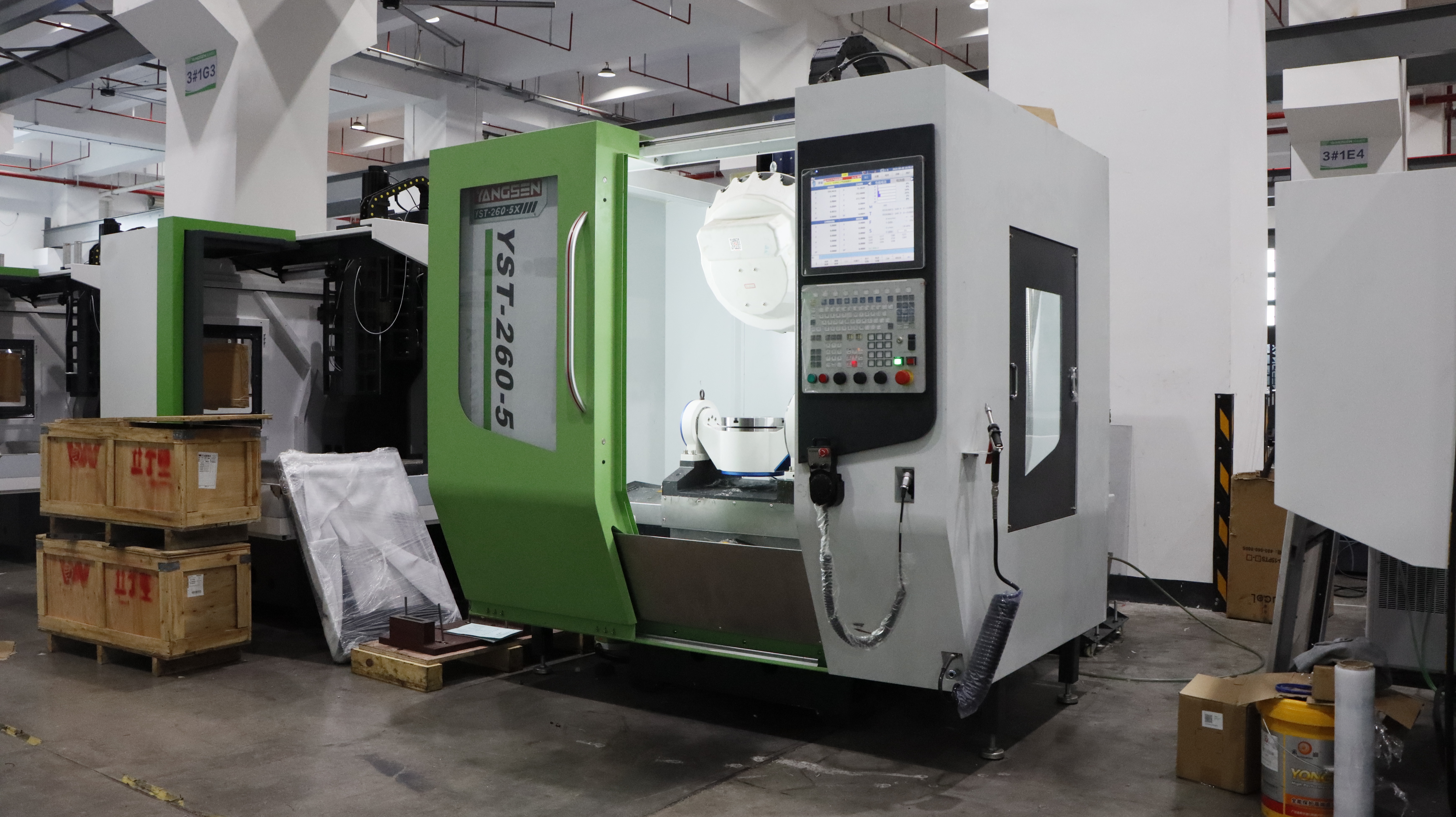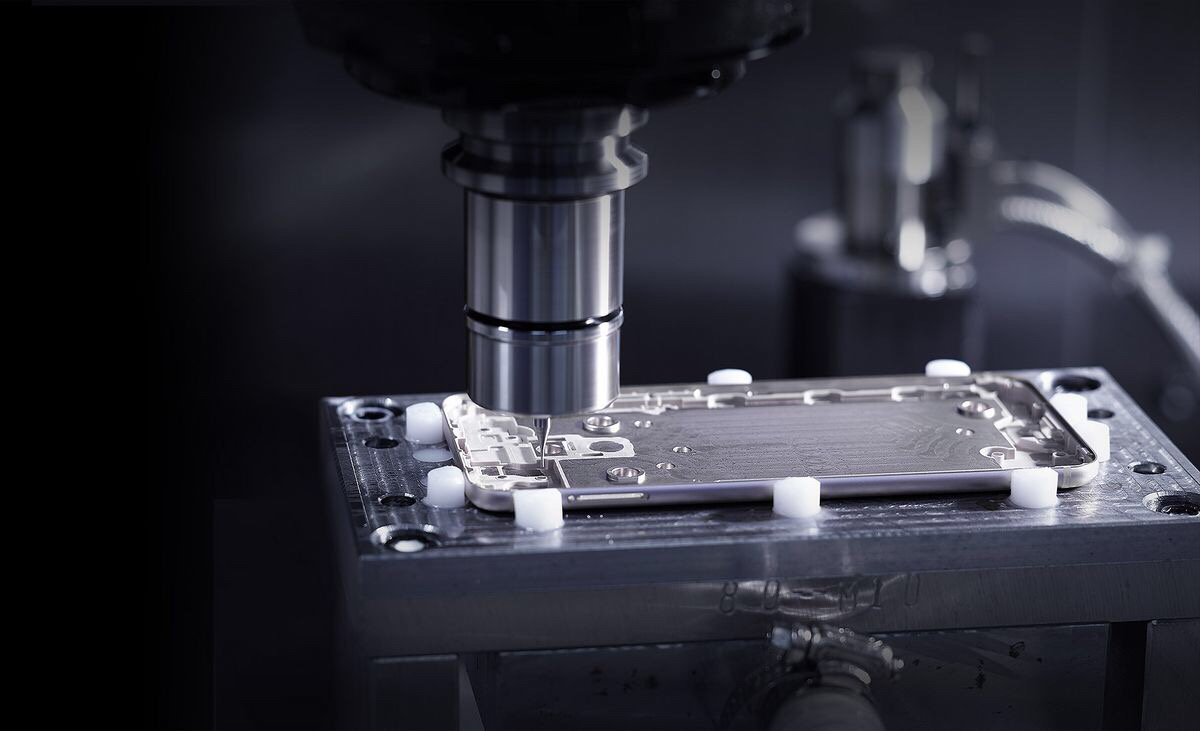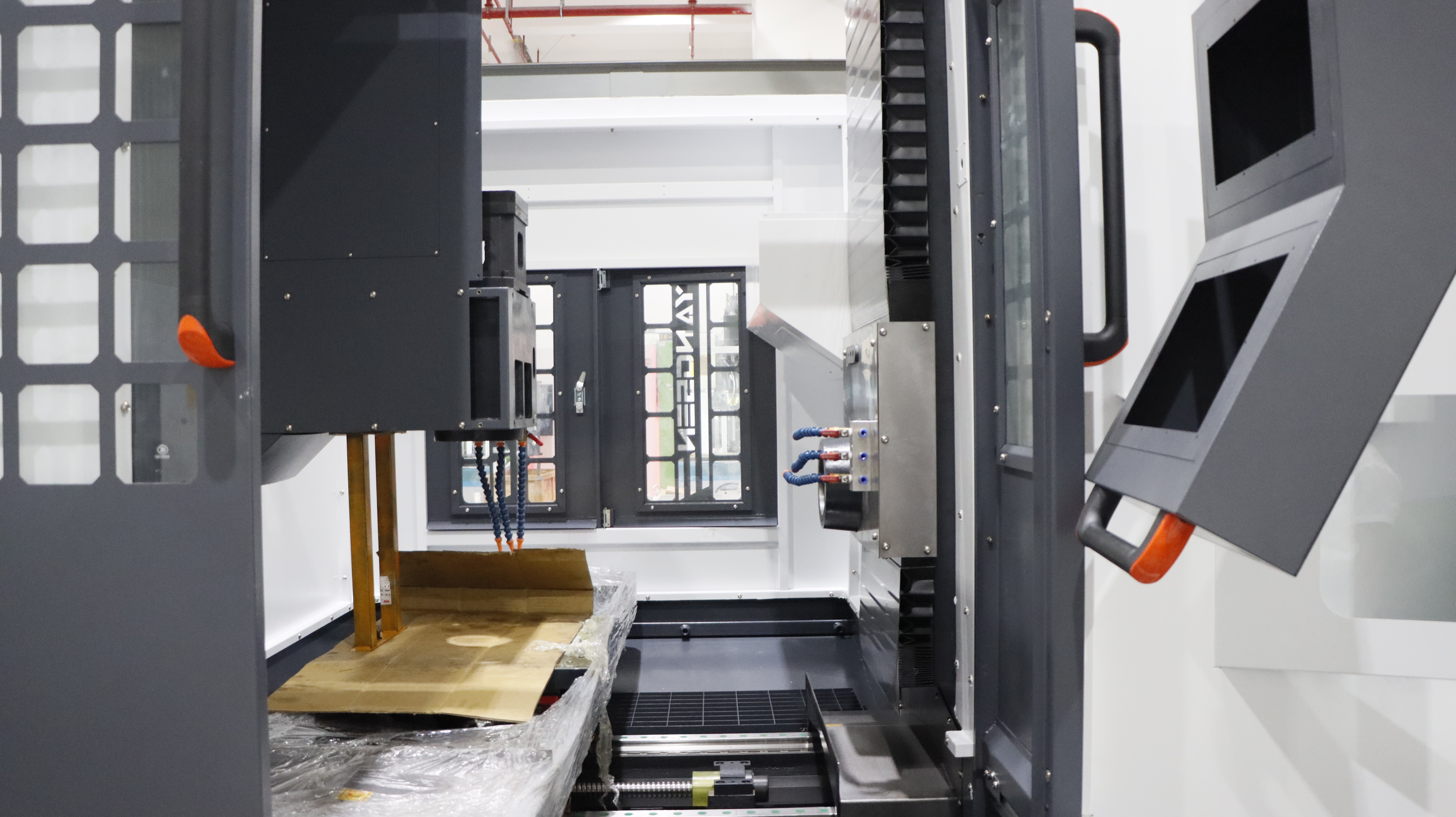News Detail
YangSen offers remarkable products, fast services, and punctual delivery time.
24
2024
-
10
How Does a 5-Axis CNC Machine Operate?
Author:
Explore what a 5-axis CNC machine is, how it works, and why it’s an essential tool in industries requiring intricate and high-precision components.
A 5-axis CNC machine is one of the most advanced and versatile tools in modern manufacturing. It allows for more precise, complex machining processes compared to traditional 3-axis machines. In this article, we’ll explore what a 5-axis CNC machine is, how it works, and why it’s an essential tool in industries requiring intricate and high-precision components.

What is a 5-Axis CNC Machine?
A 5-axis CNC (Computer Numerical Control) machine can move a tool or part along five different axes simultaneously. This capability allows the machine to perform complex cuts and shapes with a single setup, reducing production time and improving precision. The five axes of movement include:
- X-Axis: Left to right (horizontal movement).
- Y-Axis: Front to back (horizontal movement).
- Z-Axis: Up and down (vertical movement).
- A-Axis: Rotation around the X-axis (tilting of the tool or part).
- B-Axis: Rotation around the Y-axis (tilting or swiveling of the tool or part).
With this combination of linear (X, Y, Z) and rotational (A, B) axes, a 5-axis CNC machine can access and machine parts from multiple angles and orientations without manual repositioning.
How Does a 5-Axis CNC Machine Work?
1. Motion Control
The primary function of a 5-axis CNC machine is its ability to move along five axes simultaneously. The machine uses advanced motion control software to calculate and execute toolpaths with precision. Here’s how the motion works:
- Linear Movement (X, Y, Z): These are the same axes used in a traditional 3-axis CNC machine. The tool can move left-right (X-axis), front-back (Y-axis), and up-down (Z-axis), allowing for vertical and horizontal machining operations.
- Rotational Movement (A, B): The addition of the A and B axes allows the machine to tilt the tool or the workpiece. This flexibility enables the machine to access hard-to-reach areas, perform undercuts, or machine complex contours without the need to reposition the part manually.
The synchronized movement of these five axes ensures that even the most intricate geometries can be machined efficiently in a single setup.
2. Toolpath Generation
The movement of the tool is controlled by CAD/CAM (Computer-Aided Design/Computer-Aided Manufacturing) software, which generates the toolpaths for each part of the workpiece. The software translates the 3D model of the part into precise instructions (G-code) for the CNC machine.
In 5-axis machining, the tool can be angled and rotated in various ways while following a continuous toolpath, allowing for smooth transitions between surfaces and reducing the need for additional setups or fixtures.
3. Workholding
One of the key advantages of 5-axis CNC machines is the reduced need for multiple setups. With the ability to access different angles in one operation, the part is typically held in a single position, and the machine can reach all necessary surfaces. This not only improves precision but also reduces the likelihood of human error, making it more efficient for complex parts.
4. Real-Time Monitoring and Adjustments
Modern 5-axis CNC machines often come equipped with sensors and feedback systems that monitor the machining process in real-time. These systems can detect deviations or errors during cutting and make automatic adjustments to ensure accuracy. This feature is crucial when machining high-value parts where precision is paramount.
Advantages of 5-Axis CNC Machining
1. Complex Geometries
One of the most significant advantages of 5-axis CNC machining is its ability to produce complex shapes and geometries. For example, parts that require curved surfaces, angled cuts, or intricate details can be machined in one setup, eliminating the need for multiple operations.
2. Reduced Setup Time
In 3-axis machining, parts often need to be repositioned manually to allow the machine to access different surfaces. In contrast, a 5-axis CNC machine can access all sides of the part without repositioning, which reduces setup time and increases overall production speed.
3. Enhanced Surface Finish
The ability to tilt the cutting tool during machining helps maintain optimal cutting angles and speeds, reducing tool wear and improving surface finishes. This is especially important for high-precision industries like aerospace, medical devices, and automotive components.
4. Increased Precision
With fewer setups and manual interventions, there’s a reduced risk of human error. This leads to higher precision in machining complex parts and more consistent results, which is vital for industries where tight tolerances are required.
Applications of 5-Axis CNC Machines
The capabilities of 5-axis CNC machines make them essential in industries where precision, complexity, and efficiency are required. Some common applications include:
-
Aerospace: The aerospace industry demands parts with complex geometries, such as turbine blades, airframes, and engine components. 5-axis machining allows for the creation of these intricate parts while maintaining strict tolerances.
-
Automotive: High-performance automotive components, such as engine parts, require precision machining. 5-axis CNC machines are used to manufacture complex parts like cylinder heads and turbochargers.
-
Medical Devices: 5-axis CNC machines are commonly used in the medical field to produce implants, prosthetics, and surgical instruments, where precision is critical for safety and performance.
-
Mold Making: In mold and die manufacturing, 5-axis machining is used to create complex molds with fine details, reducing the need for manual finishing and increasing production speed.
Conclusion
A 5-axis CNC machine is a powerful and versatile tool that opens up new possibilities for manufacturers by enabling complex machining tasks to be completed with precision, efficiency, and fewer setups. Its ability to move along five axes simultaneously allows for the creation of intricate, high-quality parts that would be challenging or impossible to produce with traditional machining methods.
By reducing production time, improving surface finishes, and increasing overall precision, 5-axis CNC machining is the preferred choice for industries that demand complex, high-performance parts. Understanding how this advanced technology works helps manufacturers harness its full potential and achieve superior results in their production processes.



